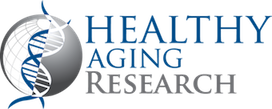
Healthy Aging Research
Open Access
ISSN: 2261-7434

ISSN: 2261-7434
Opinion Article - (2025)Volume 14, Issue 1
Telomere integrity, defined not only by telomere length but also by their structural stability and functional preservation, is increasingly recognized as a predictive marker of healthy aging outcomes. Among the many biological indicators of aging, telomeres-protective DNA-protein structures capping the ends of linear chromosomes-have emerged as critical biomarkers of cellular aging and organismal health. The maintenance of telomere integrity is vital for genomic stability, cellular replication, and tissue homeostasis. Understanding the biological significance of telomeres and their role in the aging process offers valuable insight into the mechanisms of agerelated decline and the potential to intervene in the trajectory of aging.
Numerous epidemiological studies have demonstrated that shorter Leukocyte Telomere Length (LTL) is associated with a higher risk of age-related diseases, including cardiovascular disease, type 2 diabetes, neurodegenerative conditions, and some cancers. Moreover, LTL is often used as a surrogate marker for systemic aging, as it reflects the replicative history and stress exposure of hematopoietic stem cells and peripheral blood cells. Recent research emphasizes that telomere integrity-encompassing not only length but also the maintenance of telomeric structure, shelterin protein composition, and telomerase activity-is a more robust indicator of cellular health and aging resilience.
Telomerase, a ribonucleoprotein enzyme complex plays a central role in preserving telomere integrity. Experimental models have demonstrated that upregulating telomerase can extend telomeres and improve tissue regeneration in aged organisms. For example, mice engineered to express active telomerase under controlled conditions exhibit delayed aging phenotypes, improved organ function, and extended lifespan. Telomere dysfunction, even in the absence of critically short telomeres, can activate a DNA damage response. Therefore, telomere integrity encompasses both physical length and the presence of a functionally intact telomeric complex. Damage to telomeric DNA due to oxidative stress, inflammation, or metabolic dysregulation accelerates telomere attrition and compromises cellular function.
Lifestyle and environmental factors significantly influence telomere dynamics, further underscoring their role as biomarkers of aging. Chronic psychological stress, poor diet, sedentary behavior, smoking, and exposure to pollutants have all been associated with accelerated telomere shortening. Conversely, interventions such as regular physical activity, a Mediterranean-style diet rich in antioxidants, stress reduction practices, and sufficient sleep have been linked to longer telomeres and improved telomerase activity. These associations suggest that telomere integrity is not only a marker of aging but also a modifiable trait, making it a valuable target for preventive health strategies.
Importantly, studies have revealed that telomere length and function vary significantly between individuals, even among those of similar chronological age. This variability reflects differences in genetic predisposition, environmental exposures, and cellular stress levels, supporting the notion that telomere integrity serves as a biomarker of biological age rather than chronological age. Certain genetic polymorphisms in genes related to telomerase function and DNA repair pathways influence baseline telomere length and the rate of shortening. In clinical contexts, the assessment of telomere integrity is gaining traction as a tool for risk stratification and early detection of aging-related pathologies. Telomere length measurement, typically performed using quantitative PCR (qPCR), Southern blotting, or more recently, high-throughput digital assays, provides a snapshot of systemic aging. While technical variability and cell-type specificity remain challenges, methodological advances are improving the precision and reproducibility of these assessments.
The integration of telomere data with other biomarkers-such as epigenetic clocks, mitochondrial function, inflammatory markers, and metabolomic profiles-is enhancing the predictive power of biological aging assessments. In longitudinal studies, individuals with more stable telomere length over time tend to experience fewer age-related diseases, better cognitive function, and greater physical performance. These findings underscore the potential of telomere integrity as a component of composite aging indices, enabling more personalized approaches to aging research and healthcare. Moreover, telomere-targeted therapeutics are being explored as potential interventions to promote healthy aging. For example, small molecules like TA 65 have shown some promise in activating telomerase and improving markers of immune function and metabolic health in human studies, although the long-term efficacy and safety of such interventions remain under scrutiny.
In sum, telomere integrity represents a dynamic, multifaceted biomarker with strong relevance to healthy aging outcomes. It reflects both the cumulative burden of cellular stress and the organism's capacity for repair and regeneration. Unlike chronological age, which is fixed, biological aging as indicated by telomere health can be influenced by lifestyle, environment, and potentially therapeutic interventions. As the field advances, telomere integrity will likely play a central role in aging research, predictive medicine, and public health strategies aimed at extending healthspan-the period of life spent in good health. Through ongoing efforts to refine telomere measurement, understand regulatory mechanisms, and develop targeted interventions, researchers are bringing us closer to a future where age-related decline can be anticipated and mitigated through personalized, molecularly informed approaches.
Citation: Goel T (2025). Telomere Integrity as a Biomarker of Healthy Aging Outcomes. Healthy Aging Res. 14:228.
Received: 03-Mar-2025, Manuscript No. HAR-25-38431; Editor assigned: 05-Mar-2025, Pre QC No. HAR-25-38431 (PQ); Reviewed: 19-Mar-2025, QC No. HAR-25-38431; Revised: 26-Mar-2025, Manuscript No. HAR-25-38431 (R); Published: 02-Apr-2025 , DOI: 10.35248/2261-7434.25.14.228
Copyright: © 2025 Goel T. This is an open-access article distributed under the terms of the Creative Commons Attribution License, which permits unrestricted use, distribution, and reproduction in any medium, provided the original author and source are credited.